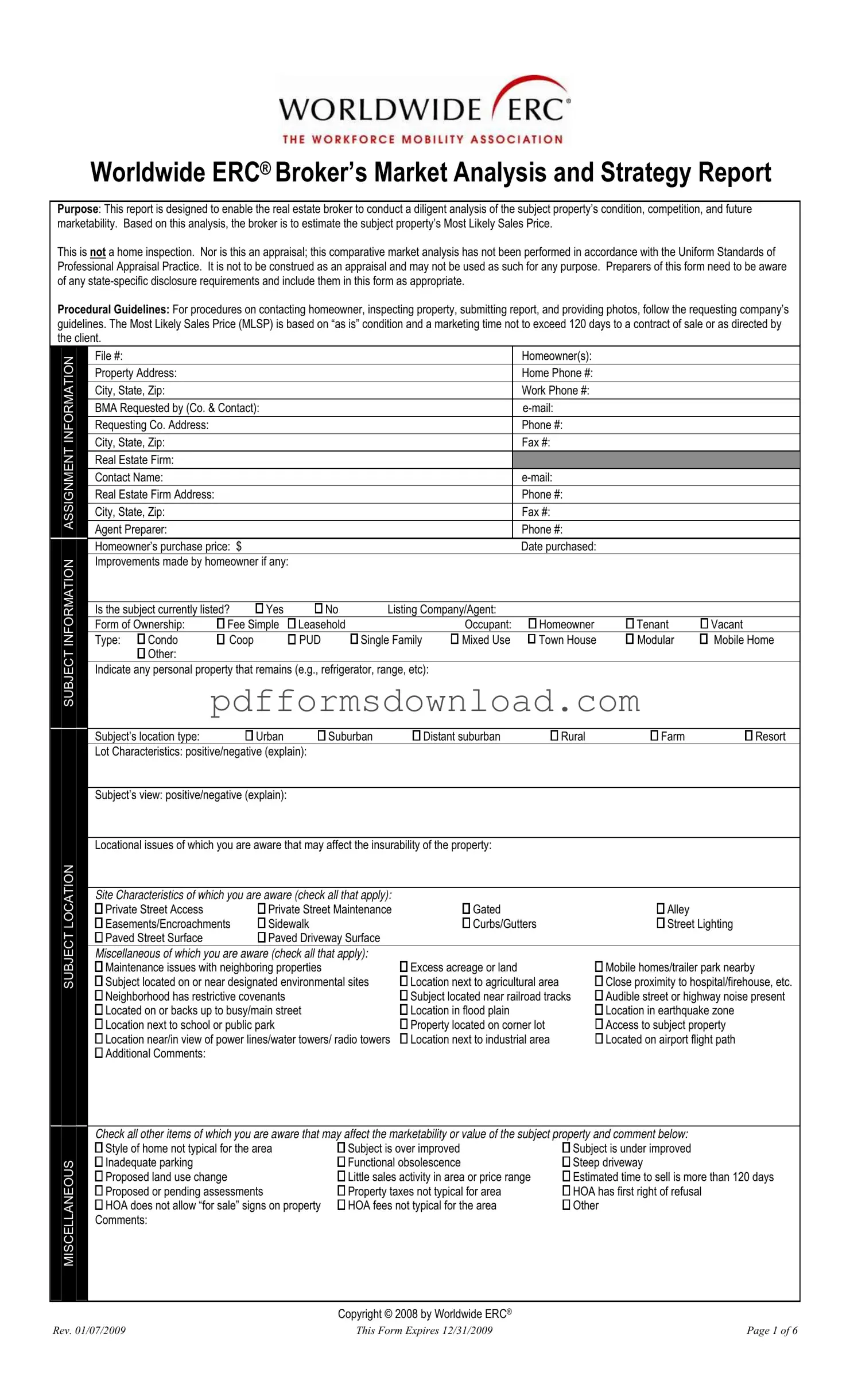What is the purpose of the ERC Broker Market Analysis form?
The ERC Broker Market Analysis form is designed to help real estate brokers assess a property's condition, competition, and potential marketability. This analysis allows brokers to estimate the Most Likely Sales Price (MLSP) of the property. It is important to note that this form is not an appraisal or a home inspection, and it should not be used as such.
Who should complete the ERC Broker Market Analysis form?
The form should be completed by licensed real estate brokers who are familiar with the property and the local market. They must conduct a thorough analysis based on the information provided, ensuring that all relevant state-specific disclosure requirements are met.
What information is required on the form?
Key information includes the property address, homeowner details, the real estate firm involved, and specifics about the property itself. This encompasses its condition, any improvements made, and its current market status. Additionally, brokers must provide insights on the neighborhood and broader market conditions.
What is the Most Likely Sales Price (MLSP)?
The MLSP is an estimate of what the property is likely to sell for in its current condition, taking into account market trends and conditions. This estimate is based on an expected marketing time of no more than 120 days unless otherwise directed by the client.
Are there any specific guidelines for conducting property inspections?
Yes, brokers must follow the guidelines set forth by the requesting company when inspecting the property. This includes contacting the homeowner, conducting the inspection, and submitting the report along with any required photographs.
What types of conditions should be noted on the form?
Brokers should document any observed conditions that may affect the property's value or insurability. This includes issues such as water damage, structural problems, and any maintenance concerns. Additionally, they should note any recommended repairs and their estimated costs.
Can the form be used for properties that are not currently listed for sale?
Yes, the form can be utilized for properties that are not listed. Brokers can provide an analysis based on the current condition and potential marketability, even if the property is not actively on the market.
How often is the ERC Broker Market Analysis form updated?
The form is periodically reviewed and updated to ensure it remains relevant and compliant with current market practices. The version referenced here is noted to expire on December 31, 2009, indicating that users should check for the most recent version.
